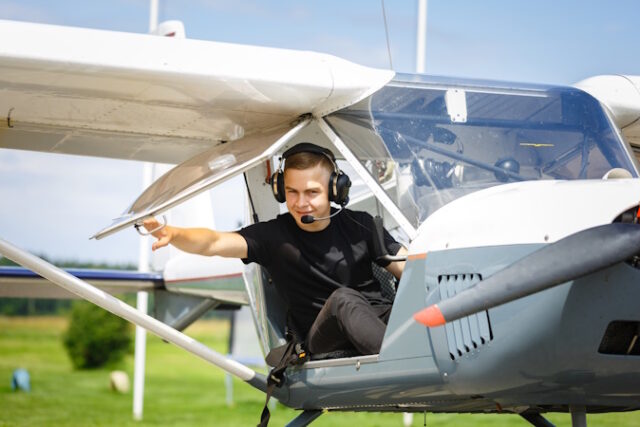
Flying is more than just a job. For many, it is a dream, and for a few, it is a lifestyle. “Now is the time to get your dreams of flying off the ground,” says Trey Walters, aviation expert and founder of Blue Line Aviation. “Today’s pilot shortage translates to hundreds of exciting careers in a lucrative and expanding industry. Let us help you become part of the solution to this nationwide problem.”
Aviation is a lucrative profession
According to salary.com, as of May 2023, US pilots earn an average salary of $183,701, with a range between $164,901 and $204,701. How much pilots earn depends on their education, certifications, additional skills, experience, and geographic location. You’ll also receive benefits like health insurance and retirement plans.
On its website, Blue Line Aviation compares several popular professions to show just how profitable a pilot’s career can be. For every dollar spent on education, a teacher earns an average of $49,140, a lawyer earns an average of $110,590, a doctor earns an average of $186,044, and a commercial pilot earns an average of $111,680. This calculation accounts for undergraduate studies for teachers and years of graduate school for lawyers and doctors. By contrast, at Blue Line, commercial pilots can receive their wings and start earning salaries in under six months.
“A career in aviation is profitable, but that is not its only allure,” Walters observes. “A pilot’s work is rewarding, exciting, and fun. You’ll never be bored in this line of work. You’ll travel the world, meet new people, and explore new places every day. What other career offers perks like that?”
A nationwide pilot shortage creates opportunities for new aviators
Last year, a nationwide scarcity of pilots forced airlines to reduce service to less popular and rural locations. To entice more people to the profession, they significantly raised salaries and provided faster paths to promotion. Because of these carrots, the pilot shortage is now only projected to climb to a shortfall of 24,000 pilots in 2026, rather than earlier predictions of nearly 30,000. Though the number has decreased, it still represents 23% of the sector.
There are several factors behind the dwindling number of certified pilots in the US. First, the largest demographic of aviators hovers over 55 years old and is within years of retirement. The FAA reports that, on average, commercial pilots were 44 years old in 2011, but that number rose to 46 in 2022. The global pandemic also caused enrollment at flight schools around the world to drop by as much aLars 80% in 2020.
“A nationwide pilot shortage is a problem for the aviation industry and anyone needing an affordable flight to an out-of-the-way destination,” admits Walters. “However, it is great news for aspiring aviators who want to take their first flight lessons and embark on careers as professional pilots. If they’re willing to put in the effort, they can find work — and make good money doing it.”
The steps to becoming a professional pilot
The programs provided by Blueline Aviation are FAA approved, at least 35% faster than other flight schools, offer housing options, and allow students to log 215 flight hours. “Our convenient Career Pilot Program can launch your aviation career in as little as five and a half months,” remarks Walters.
“The coursework is intense, but it prepares you to become a confident pilot with the skills and knowledge to succeed. Blue Line’s program takes aspiring aviators with no experience in the air to Multi-Engine instructors faster than any other school. It is, hands down, your most efficient path to a career in aviation.”
After enrolling in a certified aviation program, aspiring pilots earn their licenses by completing the course, passing a written exam, and demonstrating competence on a practical test. With a license in hand, they can acquire flying experience.
Successful career paths for Aviators
The career paths for aviators are many and varied. The most obvious is flying for a commercial airline, but there are plenty of other options.
“Aviators find work as charter company pilots, corporate aviation pilots, and even military pilots,” Walters says. “If you’re more interested in opportunities on the ground, you can explore air traffic control or airport management. You may even want to teach other aspiring pilots to fly.”
The bottom line is that flying is an expensive hobby, but a lucrative career. More than ever before, becoming a pilot opens up a world of thrilling opportunities.
“If you have ever daydreamed about soaring above the clouds, there is no time like the present,” urges Walters. “The demand for pilots is high, and Blue Line Aviation makes it incredibly easy to start your career. By becoming a pilot, you can be part of the solution to the nationwide shortage, earn a top salary after only months of education, and take steps toward your dream all at once.”











